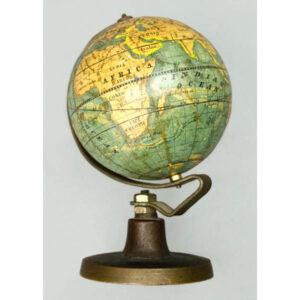Description
By the time Audubon began work on The Quadrupeds, he had been joined in his publishing business by his sons, John Woodhouse Audubon and Victor Gifford Audubon. He also collaborated closely on the work with Reverend John Bachman, a recognized authority on quadrupeds in the United States as well as his sons’ father-in-law. As the elder Audubon’s physical and cognitive health faded about halfway through the project, John Woodhouse took over the drawing of the remainder the plates, while Victor managed the financial aspects of the publishing business. The Audubons published 150 prints of mammals in 30 parts over a five-year period for about 300 subscribers — the largest successful colorplate book project to have been produced in America. A smaller octavo edition was also subsequently published.
John James Audubon, the most renowned American bird artist and ornithologist, was born in Haiti, in 1785. When French control of Haiti ended in 1803, he was sent to his father’s farm near Philadelphia. He married and moved to Kentucky five years later. A self-taught artist, Audubon developed his own methods of mounting birds so he could draw them in lifelike positions. He also expanded on showing the birds in the natural habitat, following the lead of Mark Catesby (1682- 1749), an English naturalist responsible for the first published illustrated account of the flora and fauna of North America. Audubon conceived of the project to document the birds of America in 1810, but financial setbacks prevented him from seriously embarking upon it until 1820. He and his family relocated to Louisiana, and from there he explored vast regions of the United States along the East Coast and through parts of the Midwest, drawing the various species of birds in their natural habitats.
In 1826, Audubon traveled to England with his portfolio of ornithological works to seek support for its publication, and was warmly received by influential members of the scientific community, who helped him make the necessary connections. Audubon’s original drawings and watercolors were engraved and published as The Birds of America, principally in London, by Robert Havell, Jr., in an unprecedented “double elephant folio” size. Approximately 200 sets were issued in parts of five prints each, from 1827 to 1838, and then often bound as a set of books. This exceedingly rare work is now considered the greatest natural history color-plate book ever made in terms of its historical and scientific importance and accuracy, the artistry of the compositions, and the quality and size of the prints.
John Woodhouse Audubon was the second son of artist and naturalist John James Audubon. By 1833 he was accompanying his father on expeditions, drawing and collecting specimens, and went on collecting missions of his own to gather both birds and mammals. By the mid 1830s, both Audubon sons were involved in the family’s publishing business. John Woodhouse oversaw the production of the octavo version of The Birds of America, including changes in composition in the reduction of 500 plates to the smaller size. He also painted about half of the illustrations for The Viviparous Quadrupeds of North America and supervised the printing of all the plates for it. After his father’s death, he published a second octavo edition of The Birds of America (1856). In addition, he began an American folio size lithograph (so called Bien) edition of Audubon’s birds, but it was left incomplete due to the intervening American Civil War. John Woodhouse Audubon exhibited portraits and animal paintings in New York throughout the 1840s and 1850s at the Apollo Association, American Art-Union, and National Academy of Design.
Full publication information: Hystrix Dorsata, Linn. Canada Porcupine. 4/5 Natural Size. Drawn from Nature by J.J. Audubon. F.R.S.F.L.S. Lith. Printed & Col’d by J.T. Bowen, Philad’a. 1844. No. 8. Plate XXXVI.
Condition: Generally very good, recently professionally cleaned and deacidified with only minor remaining toning, wear, handling. Disbinding marks far left edge, as issued.
References:
“John Woodhouse Audubon.” National Gallery of Art. 2018. https://www.nga.gov/collection/artist-info.128.html (3 April 2019).
Nissen, Claus. Die Zoologische Buchillustration: ihre Bibliographie und Geschichte. Stuttgart: 1969-78. 162.
Sabin, Joseph, Wilberforce Eames and R.W.G. Vail. Dictionary of Books Relating to America: From Its Discovery to the Present Time, Volumes I and II. 1868. Reprint ed. Mansfield Center, CT: Martino Publishing, 1998. 2367.
Wood, Casey A. (ed.) An Introduction to the Literature of Vertebrate Zoology Based Chiefly on the Titles in the Blacker Library of Zoology, the Emma Shearer Wood Library of Ornithology, the Bibliotheca Osleriana, and Other Libraries of McGill University, Montreal. London: Humphry Milford, Oxford University Press, 1931. p. 208.








